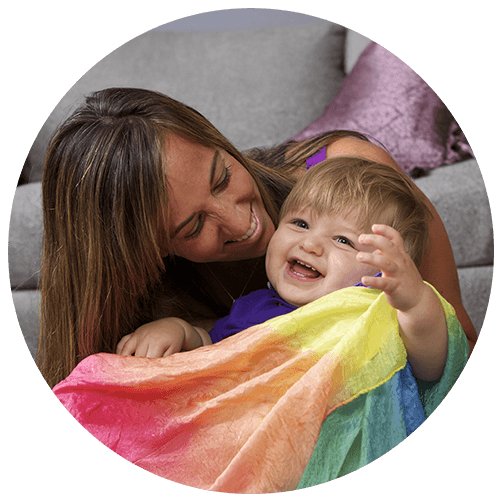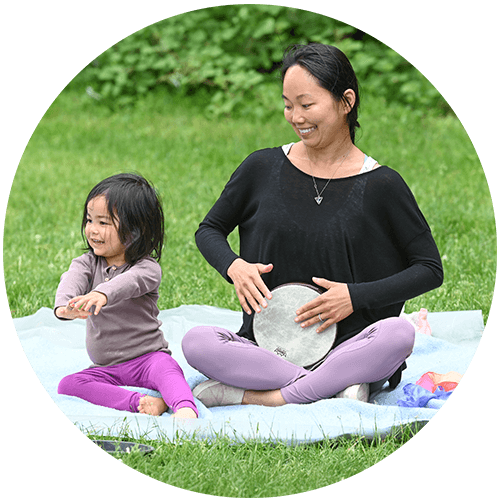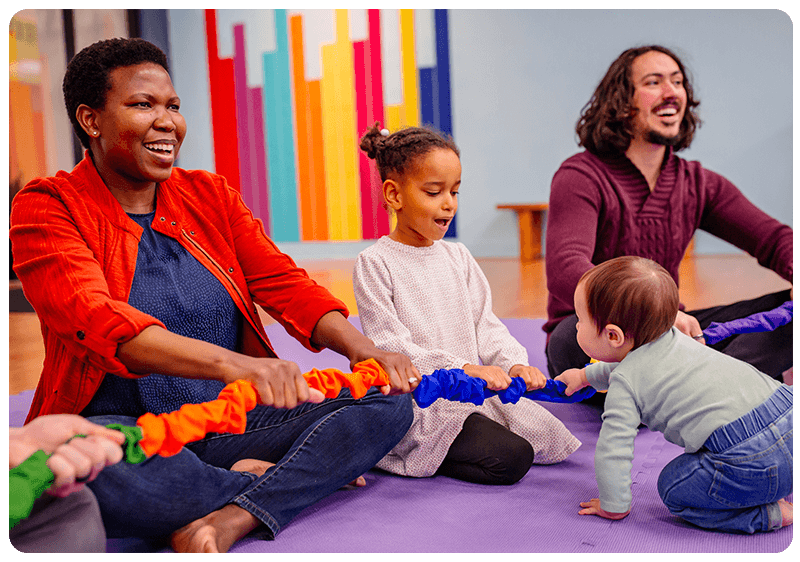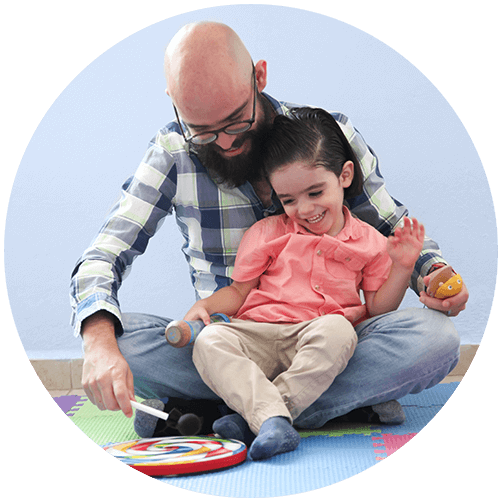Rethinking Tradition in Children’s Music

When I was little, my father would sing “Oh! Susanna” to me, and I loved it. It wasn’t the lyrics (I didn’t even understand them until I was older) or his magnificent singing voice (he couldn’t carry a tune in a bucket!). My attachment to the song was about how I experienced it: sitting on my dad’s lap, snuggled up to his chest, warm and safe and happy.

We all have a story like this one—a story of a song that reminds us of someone we love or of a meaningful time in our lives. Think about families sharing holiday songs, joining in a traditional wedding dance, or even singing “Happy Birthday!” Music is a fundamental way that families, communities, and societies hold experiences and express shared values.
As the CEO of Music Together® Worldwide, I think about music a lot. In particular, I think about the songs we share with our children when they’re young. From the time we are born, our families begin the process of shaping our lives: the foods we eat, the language we speak, the rituals we follow. And music is no different. Throughout time and across civilizations, music has been a critical way that we learn cultural identity. And it starts at home when we’re very young.

That’s also when we develop deep, sometimes lifelong attachments to the songs we enjoyed with our families. Those early music memories stay with us. ”Music functions as a container for experience,”i which is why hearing a song from our youth can have such emotional impact. Songs take us back to the feelings we had around the piano, at a birthday party, or, in my case, on my dad’s lap.
But what if one (or more) of the songs we grew up loving arose from a system of oppression that was hurtful to people within our communities? “Oh! Susanna!” is dear to me because it reminds me of my dad. But I recently learned that the song has its origins in minstrelsy—and that changed how I feel about it. Should this song, and others like it, continue to be a part of the canon of songs we share with our children?
As early childhood music educators, we have a responsibility to ensure that the music young children are exposed to—the music that will serve as their lifelong emotional containers—is respectfully rendered and honors the past without celebrating the marginalization or denigration of others. At Music Together, it is our goal to create an inclusive music education curriculum that:
- Exposes children and their families to a broad palette of music, creating a strong foundation for future music-learning;
- Gives children a lifelong facility for enjoying, learning, and making music;
- Appeals to all types of families worldwide, regardless of national origin, ethnicity, or socioeconomic status;
- Helps children understand the music of their own culture, as well as the music of other cultures;
- Breaks down barriers and bridges cultural experiences;ii
- And, minimizes harm by eschewing music rooted in oppression.
We recognize that when we choose to include a song in the Music Together curriculum, we are essentially celebrating it. By sharing a song with families with young children, we are ensuring that it will continue to have a life—and that the next generation of children will create new attachments to it. Unfortunately, not all songs are equally worthy of such celebration and attachment.

It became clear that in order for Music Together to make informed decisions regarding song material, we would need to create a reliable evaluation process. To that end, we have recently formed the Music Together Song Advisory Board, comprised of a rotating panel of ethnomusicologists, music historians, music educators, and culture-bearers.
Using historical, anthropological, and musicological data, together with the current Board members, we have designed a set of evaluation criteria to ensure that the songs we include in our curriculum do indeed meet the above-stated goals.
In addition, Music Together has a unique responsibility in that we don’t just teach songs, we also record them. Respecting the aesthetic integrityiii of a song—its musical attributes as well as its relationship to the original source material—is critical. When producing, arranging, and recording music from multiple cultures, we are committed to working in partnership with people of each culture whenever possible.
Through this music evaluation process, we will determine that some songs do not belong in an early childhood music curriculum. A song’s value is dependent upon a variety of factors, including who is learning it and why. For example, a violent protest song might be taught as part of a college course to help students more deeply understand an historical moment, but singing the same song with a two-year-old could be quite inappropriate. It is incumbent upon us as music educators to discern which songs are suitable to celebrate with very young children, and which are best left to music history classes, where context is an important part of the study.
Music Together has removed some songs from our collections. These can be tough decisions, and the results are not always easy to bear. It can be hard to let go of attachments to music we learned in childhood. Songs we sang on the playground or around a grandparent’s piano carry with them deep emotions and a sense of cultural belonging. Personally, I will always think of the security of my dad’s lap when I hear “Oh! Susanna”; but I can tell you I won’t be singing that one with my future grandchildren.

It's time for a change in music education. The music we teach matters. We cannot continue to automatically turn to the same songs taught by our predecessors simply because of tradition. Songs like “Oh! Susanna” are a part of our country’s history and can be wrestled with in higher education, studied by historians, and even reclaimed and made new by the next generation of artists. But we simply cannot celebrate these songs out of context in an early childhood setting.
Happily, the world of music is huge! Instead of encouraging children to form attachments to those songs born from oppression, we have the opportunity, and the responsibility, to share songs that carry our stories, our cultures, and our history—and that do no harm. There is so much wonderful music in the world: Let’s agree to start our children off right.
iPaulnack, Karl. “We Need Music to Survive.” The Montana Professor 20.1, Fall 2009.
iiShehan Campbell, Patricia. Music, Education, and Diversity. Bridging Cultures and Communities. New York: Teachers College Press, 2018.
iiiPanel on World Music, led by Bruno Nettl, International Society for Music Education, 1996. The panel recommended: “That music education methods in the teaching of the world’s musics be formulated in such a way that the aesthetic integrity of the musics, and when possible their authentic process of transmission, be fully respected.”



